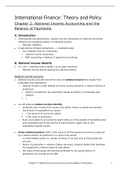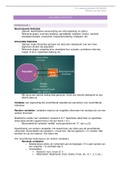Resume
Samenvatting IME: International Monetary Economics (Leo Van Hove, HI + TEW) (15/20 eerste zit)(English)
- Établissement
- Vrije Universiteit Brussel (VUB)
Dit is een samenvatting voor het vak IME, gegeven door professor Van Hove. Alle besproken theorie; chapters, extra slides en extra informatie gegeven door de professor zitten in dit document. (Engels) Deze samenvatting is gemaakt in het jaar . Met deze samenvatting haalde ik een 12/20 eerste zit, v...
[Montrer plus]





